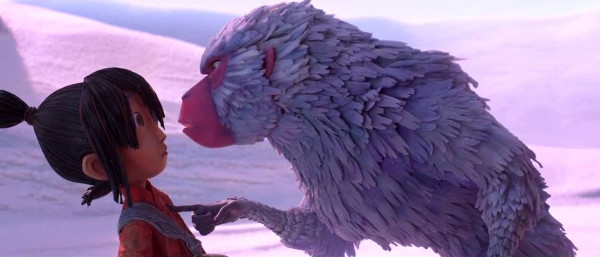Kubo and the Two Strings
-
www.kubothemovie.com
Databases Wikidata - 2016 film by Travis Knight
-
kubo-1476098335574.jpg
Screenshot from trailer: Kubo and his magical monkey sidekickCredit: Laika. Fair use.Source data licensing:
Data from Wikidata is available under Creative Commons CC-0.
lib.reviews is only a small part of a larger free culture movement. We are deeply grateful to all who contribute to this movement.Reviews
Please sign in or register to add your own review.
Kubo and the Heartstrings
“Animation” has become almost synonymous with “fully computer-generated”, but Oregon-based Laika’s stop-motion films (Coraline, ParaNorman) are a notable exception. Kubo and the Two Strings is the studio’s latest effort, which seamlessly blends physical objects animated by hand with computer-generated backgrounds. The studio uses 3D printing to rapidly prototype characters, monsters, and set pieces.
This leads to amazing visuals that stand out, where the play of light and shadows and the texture of the world feel closer to our own reality. Indeed, watching the animators arrange and move the characters may remind you of special effects teams in the pre-CGI era assembling ridiculously detailed models and animatronic creatures.
But the best technique is nothing without a good story. Kubo takes place in a fantasy version of ancient Japan. It tells us about a small boy whose mother guards him against the evil forces in her own family. Eventually, Kubo must face these forces, with a magical monkey, a samurai beetle, and a paper knight by his side. Kubo himself can use origami magic to bring stacks of paper to life, which comes in handy along the way.
I suspect many associate the style and setting of Kubo with movies that are light on plot and fun, and heavy on art and poetry, and may avoid it for fear of a film that’s more demanding than rewarding. This isn’t the case here. Like Coraline and ParaNorman, Kubo packs lots of humor, emotion, and plot twists. It’s a moving story with a lovely ending, but it doesn’t resort to standard Pixar devices to pull your heartstrings.
Instead, we get a story that speaks beautifully about love and redemption, about loss and memory and community. One cannot deny the influence of Miyazaki (Spirited Away) and Studio Ghibli, which director Travis Knight has acknowledged. But this film stands on its own, and it deserves to be seen.
